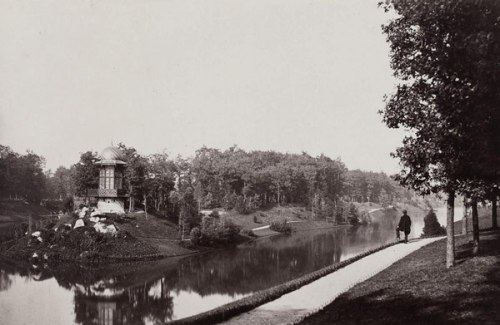When Napoleon III became emperor in 1852, Paris had only four public parks, all in the center of the city. One of the emperor’s first projects was to transform the Bois de Boulogne, a large wooded preserve on the western edge of Paris that had served as royal hunting grounds, into a grand public park. The enormous redesign entailed digging lakes and creating streams, constructing cascades and grottoes, replacing the existing straight roads with meandering paths, planting 420,000 trees, and even importing 50 deer. The park also boasted numerous public amenities: cafés, boathouses, a track for horse racing, a zoo, and a pleasure garden with restaurants, theaters, and a photography pavilion. In 1858, at the end of the renovations, Marville received his first official commission from the city of Paris to photograph the architecture and landscape of the park. Marville’s photographs—pellucid, teeming with intricate detail, and yet strangely static—perfectly convey the park’s elegant artificiality, a fantasy version of nature that catered to a growing urban bourgeoisie.
Bois de Boulogne

The Emperor’s Kiosk, Bois de Boulogne, 1858–1860
albumen print from collodion negative
Musée Carnavalet, Paris
Image © Musée Carnavalet / Roger-Viollet